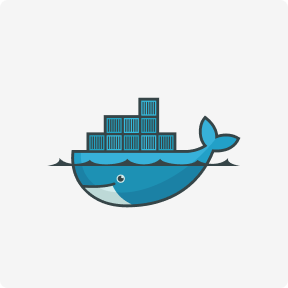Some of them are free, others come at a cost, but whichever solution you decide to pursue, make sure it can be incorporated into your current organization processes to avoid bottlenecks and other inefficiencies. As cloud networks are based on software defined networking (SDN), there is greater flexibility to implement multilayer security guard rails. You should start with a basic segmentation of workloads between different virtual networks and allow for only required communication between them. Additionally, restrict incoming traffic to your applications using network or application layer firewalls.
Providers have different default configurations, with each service having its distinct implementations and nuances. Until organizations become proficient at securing their various cloud services, adversaries will continue to exploit misconfigurations. The adoption of microservices can lead to an explosion of publicly available workload. Without close management, you could expose your infrastructure in ways you don’t know until an attack occurs. The web protection caught every phishing attempt I tested, the real-time protection blocked every malware-ridden file that I attempted to download onto my device, and the VPN offers great online privacy protection.
What are Secure Access Service Edge (SASE) Tools?
Agents that detect and protect against malware and other threats found on your operating system or host. Devices can be managed in real-time, with a comprehensive range of summaries and reports available. Changes to security policy made through the dashboard can be immediately applied to all connected devices. The cloud platform delivers Malwarebytes Endpoint Protection via a single unified endpoint agent.

Hence, the need to deploy a robust identity and access management solution to prevent unauthorized access is essential. Unauthorized access and account hijacking have been some cloud computing security benefits of the top cloud security threats requiring immediate attention. Once the crucial data has been identified, it is essential for companies to prioritize its protection.
Conduct Audits, Pentesting and Vulnerability Testing
In the event that an attacker gains access and makes changes, thorough logs offer a clear record of their actions, and a SIEM tool would allow for quick remediation to limit damage. Consider endpoint detection and response (EDR) tools and endpoint protection platforms (EPP). Additional controls to consider include patch management, endpoint encryption, VPNs, insider threat prevention, and more.
Unlike traditional antiviruses, cloud-based antiviruses don’t require the user to regularly update virus definitions because this is handled server-side. While users who neglect to update their traditional antivirus will open themselves up to vulnerabilities by running an outdated scanner, this can’t happen with a cloud-based antivirus. Avira cloud-based scanner protects your system without putting any strain on it. It uses a clever setup that accomplishes heavy-duty tasks in the cloud, leaving your computer’s resources free for other purposes. Even when performing full scans (which scored a 100% detection rate, by the way), my PC remained as speedy as ever.
They can control their whole domain, in real-time, and have a comprehensive inventory of all the active workstations and servers at their disposal. In fact, because of its marketing deals with Web hosting services, a very large number of startups and low-volume websites use the tool. The combination of CDN services, traffic optimization, DDoS protection, and WAF is also available for free.

ESecurity Planet focuses on providing instruction for how to approach common security challenges, as well as informational deep-dives about advanced cybersecurity topics. When it comes to cybersecurity, organizations that have an incident response plan in the event of a breach are better equipped to remediate the situation, avoid operational disruptions, and recover any lost data. Cloud security policies are defined to implement organization-wide restrictions to ensure security. For example, restrict workload deployment using public IPs, contain east-west traffic flow, or implement monitoring of container workload traffic patterns. In today’s digital age, cloud migration has become a necessity for businesses in Houston.
- This can help the company discover and neutralize possible dangers before they cause major damage.
- That last benefit is relevant to graphic designers, video editors, and other visual artists who often host enormous files.
- That said, the malware engine only caught 99.6% of malware in my tests (which is fantastic, but just shy of Bitdefender’s perfect score).
- Google Drive is the natural choice for anyone who regularly works in Google Docs, Sheets, and other online apps; it integrates with many third-party online apps as a cloud storage option.
As businesses migrate their activities to the cloud, they need to rethink their network-centric idea of security and re-architect for the decentralized cloud. In addition to the best practices listed above, here are some recommendations for how to defend your organization against the biggest cloud security threats. Firewalls as a Service (FWaaS) also offer cloud security benefits by expanding firewall protections outside local environments to cloud environments and remote devices. Successful infiltrations of cloud workloads are most often the result of service misconfigurations or manual configuration errors. Cloud security posture management (CSPM) solutions should be incorporated into your architecture to monitor for misconfigurations that could creep into your cloud deployment. All leading cloud service providers — AWS, Azure and GCP — follow a shared responsibility model when it comes to cloud security.

Consider a vulnerability management solution that can continuously scan workloads for vulnerabilities, compile reports and present the results in dashboards, and auto-remediate problems where possible. You should have a real-time vulnerability scanning and remediation service to protect your workloads against virus and malware attacks. The service should be able to support workloads deployed in VMs as well as in containers.